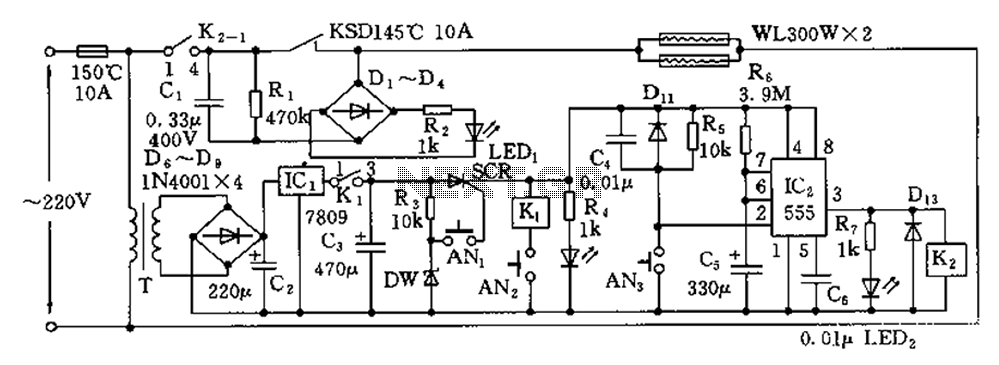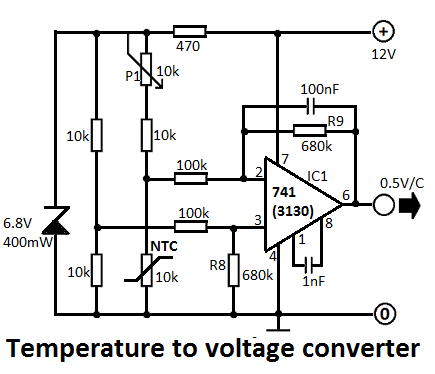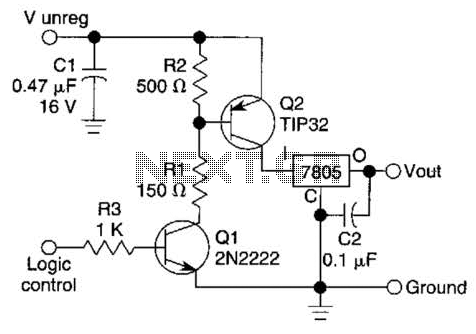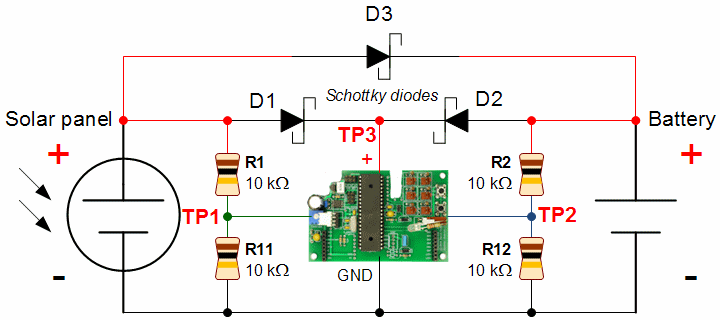
A typical circuit for the LM4916 two-channel amplifier
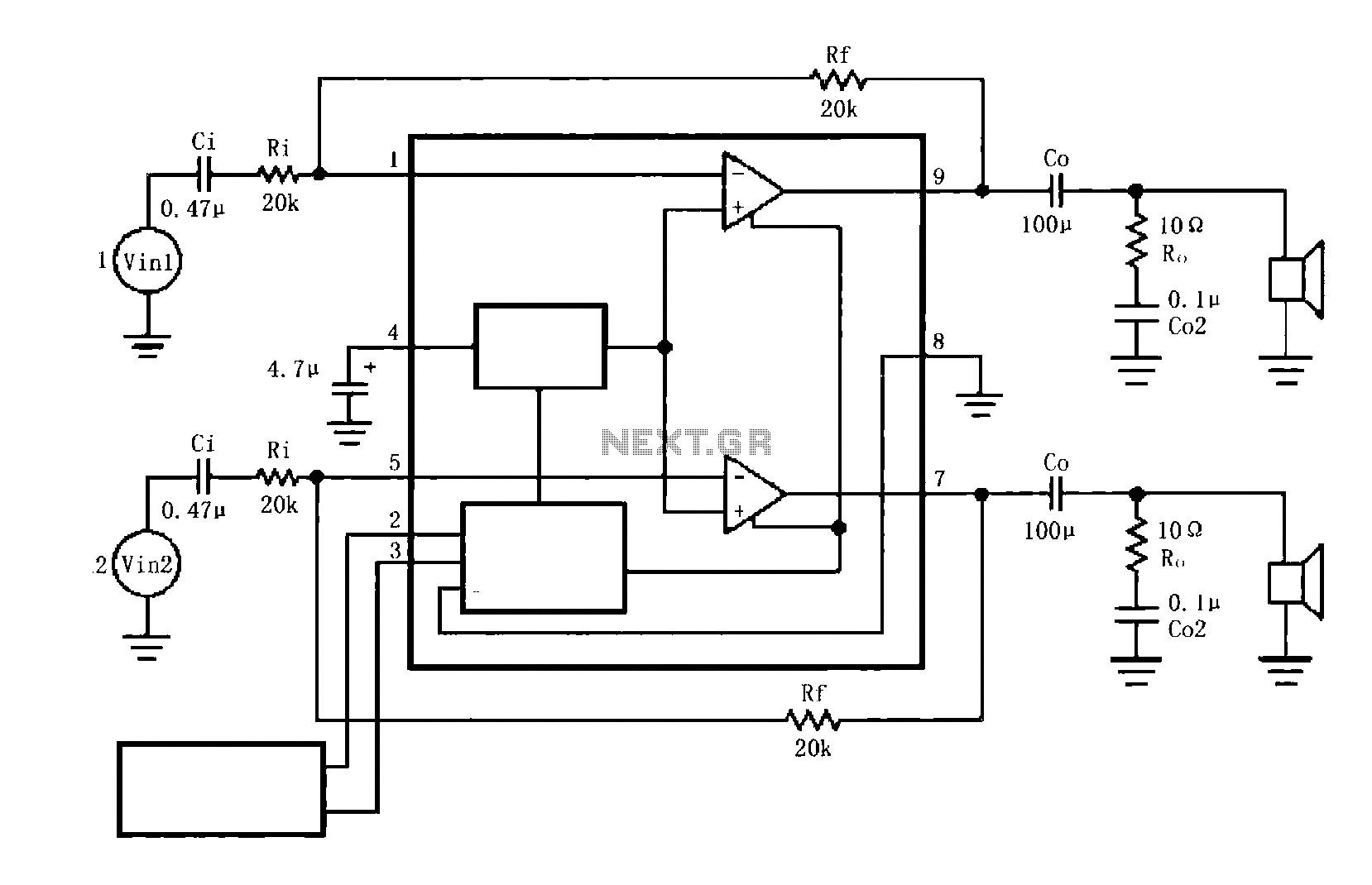
The circuit illustrated is a typical configuration for the LM4916 two-channel amplifier. The left and right channel audio signals are fed into the LM4916, which amplifies them internally. The output is then delivered through a coupling capacitor (Co) to the respective speakers. Pin 2 of the LM4916 serves as an external shutdown control; when pin 2 is connected to VDD, the amplifier operates, while grounding this pin disables the amplifier and reduces power consumption. Pin 3 functions as a squelch control; when pin 3 is at a low level, it mutes the output to prevent unwanted "click" or "pop" sounds during switching. Conversely, applying a high level to pin 3 allows the amplifier to function normally.
The LM4916 is a dual power amplifier designed for driving speakers in various audio applications. It operates from a single supply voltage, typically between 5V to 15V, making it suitable for battery-powered devices and portable audio systems. The internal architecture of the LM4916 includes a differential input stage that enhances noise immunity and improves overall sound quality.
The audio input signals are connected to the amplifier's input pins, where they are amplified by the internal circuitry. The output stage of the LM4916 is designed to drive low-impedance loads, ensuring sufficient power delivery to the connected speakers. The coupling capacitor (Co) is critical in blocking any DC offset from the amplifier, allowing only the AC audio signal to pass through to the speakers, thus protecting them from potential damage.
The external shutdown control (pin 2) is a valuable feature for power management. When not in use, grounding this pin significantly reduces power consumption, extending battery life in portable applications. The squelch control (pin 3) is equally important as it prevents audible artifacts during power-up or power-down sequences, enhancing user experience by eliminating disruptive sounds.
Overall, the LM4916 amplifier circuit is well-suited for applications requiring efficient audio amplification with minimal noise, making it a popular choice in consumer electronics, including portable speakers, televisions, and other multimedia devices. Proper implementation of the input, output, and control pins is essential for optimal performance and reliability.As shown in the figure shown for a typical circuit LM4916 two-channel amplifier. Left and right channel audio signals are input LM4916 1,5 feet, after an internal amplifier output by a 9,7 feet, after coupling capacitor Co are added to the respective speakers. LM4916 2 pin external shutdown control, when 2 feet to VDD allowed to work; prohibit work then low, reduce chip power consumption.
LM4916 3 feet squelch control, the mute mode, when the 3-pin low-level ban chip works to eliminate switching caused by "click - flapping" sound; allowed to work then high.
The LM4916 is a dual power amplifier designed for driving speakers in various audio applications. It operates from a single supply voltage, typically between 5V to 15V, making it suitable for battery-powered devices and portable audio systems. The internal architecture of the LM4916 includes a differential input stage that enhances noise immunity and improves overall sound quality.
The audio input signals are connected to the amplifier's input pins, where they are amplified by the internal circuitry. The output stage of the LM4916 is designed to drive low-impedance loads, ensuring sufficient power delivery to the connected speakers. The coupling capacitor (Co) is critical in blocking any DC offset from the amplifier, allowing only the AC audio signal to pass through to the speakers, thus protecting them from potential damage.
The external shutdown control (pin 2) is a valuable feature for power management. When not in use, grounding this pin significantly reduces power consumption, extending battery life in portable applications. The squelch control (pin 3) is equally important as it prevents audible artifacts during power-up or power-down sequences, enhancing user experience by eliminating disruptive sounds.
Overall, the LM4916 amplifier circuit is well-suited for applications requiring efficient audio amplification with minimal noise, making it a popular choice in consumer electronics, including portable speakers, televisions, and other multimedia devices. Proper implementation of the input, output, and control pins is essential for optimal performance and reliability.As shown in the figure shown for a typical circuit LM4916 two-channel amplifier. Left and right channel audio signals are input LM4916 1,5 feet, after an internal amplifier output by a 9,7 feet, after coupling capacitor Co are added to the respective speakers. LM4916 2 pin external shutdown control, when 2 feet to VDD allowed to work; prohibit work then low, reduce chip power consumption.
LM4916 3 feet squelch control, the mute mode, when the 3-pin low-level ban chip works to eliminate switching caused by "click - flapping" sound; allowed to work then high.
